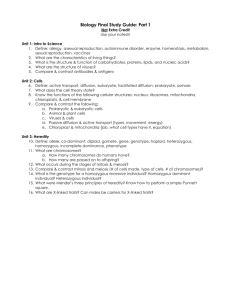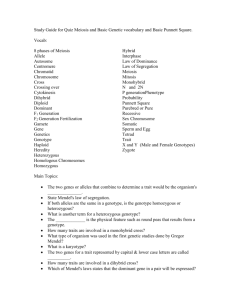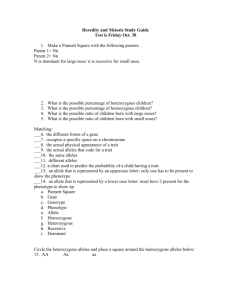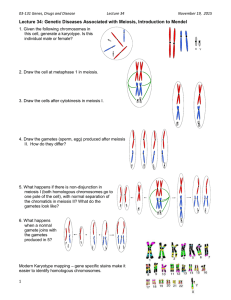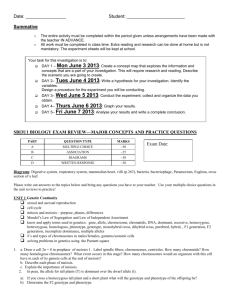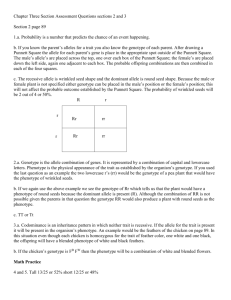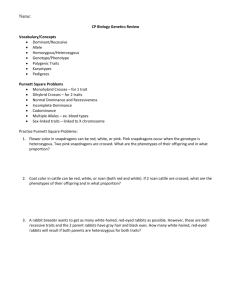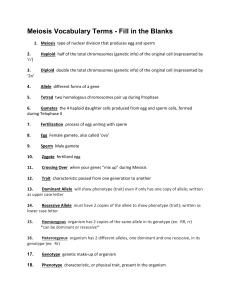Chapters 9-10, 12-13
advertisement
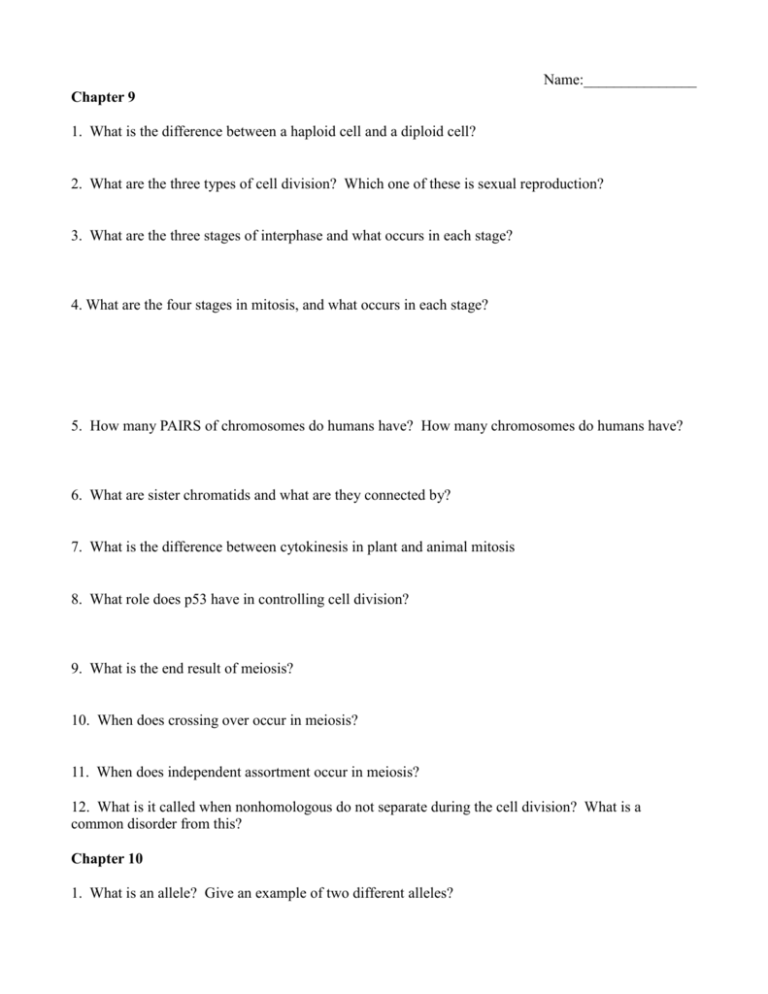
Name:_______________ Chapter 9 1. What is the difference between a haploid cell and a diploid cell? 2. What are the three types of cell division? Which one of these is sexual reproduction? 3. What are the three stages of interphase and what occurs in each stage? 4. What are the four stages in mitosis, and what occurs in each stage? 5. How many PAIRS of chromosomes do humans have? How many chromosomes do humans have? 6. What are sister chromatids and what are they connected by? 7. What is the difference between cytokinesis in plant and animal mitosis 8. What role does p53 have in controlling cell division? 9. What is the end result of meiosis? 10. When does crossing over occur in meiosis? 11. When does independent assortment occur in meiosis? 12. What is it called when nonhomologous do not separate during the cell division? What is a common disorder from this? Chapter 10 1. What is an allele? Give an example of two different alleles? 2. What is the difference between a genotype and a phenotype? 3. How do we show when allele is dominant? Recessive? 4. Give a single cross of two parents who are both heterozygous for unattached earlobes. Unattached = E, Attached = e Give the resulting phenotype and genotype. 5. What is incomplete dominance? Give a cross for a pink, heterozygous flower FRFW. 6. What is codominance? What is a popular example of codominance? Using your blood type, make a possible cross that would have occurred for you to have that blood type. 7. What is a linkage group? If genes are closer together, would crossing-over be more likely to occur between these two genes? 8. What are the difference between autosomal chromosomes and sex-linked chromosomes? How many pairs of each of these do we humans have? Chapter 12 1. How are population genetics different from Mendelian genetics? 2. What is the difference between species and a population? 3. Are allele frequencies universal all around the world? Give one example to support your answer. 4. What is the founder effect? Does it usually decrease or increase genetic diversity in a population? 5. What can cause a genetic bottleneck? Why can this be bad for species? 6. What is selective breeding? Give two examples of selective breeding. (Think of lecture) 7. What is non-random mating? Why does this have the potential to be bad for populations? 8. What is eugenics? Give one example of positive eugenics and negative eugenics. Chapter 13 1. Give the difference between macroevolution and microevolution. 2. What was the idea that traits gained during an organism’s life and transmitted to the offspring? 3. What species did Darwin study and use for his research in On the Origin of Species by Means of Natural Selection? 4. Who were the two men that proposed the theory of natural selection? 5. Describe why natural selection fits the change in bird size and bill size observed in medium ground finch populations in the Galapagos Islands after a drought year. What are the limits of natural selection? 6. Give the equation for Hardy-Weinberg Equilibrium. What do each of the symbols stand for? 7. Contrast stabilizing selection, directional selection, and diversifying selection.

